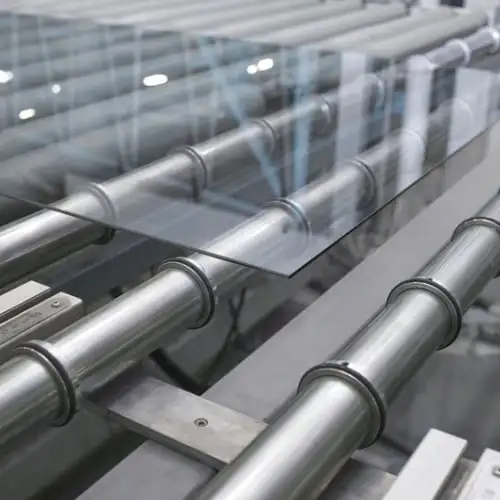Introduction
The glass manufacturing industry requires a consistent and reliable source of clean oxygen to sustain its production processes efficiently. Pressure Swing Adsorption (PSA) technology has emerged as a key solution for oxygen generation in various industries, including glass manufacturing.
In this comprehensive 2000 word guide, we will explore the applications, benefits, and working principle of PSA oxygen generators. Furthermore, we will delve into the specific requirements of the glass industry, the advantages of PSA oxygen over other generation methods, and provide a list of trusted PSA oxygen manufacturers, including Absstem.
What is PSA Technology?
Pressure Swing Adsorption (PSA) is an innovative gas separation technique that utilizes a specialized adsorbent material to selectively adsorb or capture certain gas molecules from a mixture. The process relies on swings in pressure to adsorb and desorb gases, allowing the separation of oxygen from nitrogen in air.
The technology provides a reliable and cost-effective method to produce oxygen on-site without relying on delivered oxygen cylinders or liquid oxygen. PSA oxygen generators utilize selective adsorption and desorption cycles to continuously produce a stream of purified oxygen from ambient air.
Applications of PSA Oxygen in the Glass Manufacturing Industry
Oxygen plays a critical role throughout the glass manufacturing process. It is utilized for oxidation, combustion, and enhancing product quality. The key applications are:
Importance of Oxygen in Glass Production
- Oxidizing molten glass to remove dissolved gases like CO2 and SO2
- Oxidizing contaminants like iron to improve glass clarity
- Combustion of hydrocarbon fuels to achieve high temperatures in furnaces
- Improving glass surface quality and reducing defects
Oxygen Consumption in Different Glass Processes
- In the batch house, oxygen improves the quality of raw materials
- During melting and fining, oxygen removes impurities
- Oxygen enhances forming processes like float glass production
- Downstream processes also require oxygen for quality control
Advantages of PSA Oxygen in Glass Manufacturing
- Reliable on-site oxygen source, unaffected by transportation issues
- Oxygen purity levels up to 95% to meet industry requirements
- Eliminates risks and costs associated with cylinder logistics
- Scalable oxygen capacity that can be increased as production increases
- Lower operational costs compared to alternative oxygen sources
- Consistent oxygen supply that improves process stability
Key Features of PSA Oxygen Generators
Design and Components of a PSA Oxygen Generator
- Air compressor to feed air into system
- Air filters remove particulates, moisture, hydrocarbons
- Adsorption beds containing selective adsorbent material
- Buffer tank stores produced oxygen before distribution
- PLC control panel monitors system parameters
- Additional options like oxygen analyzers and air dryers
Factors to Consider When Selecting a PSA Oxygen Generator
- Required oxygen flow rate and purity level
- Reliability, durability, and low maintenance design
- Energy efficiency and operating costs
- Capability for oxygen analysis and recording
- After-sales service and manufacturer reputation
- Customization options to meet specific needs
PSA Oxygen Generation Process
The PSA oxygen generation process involves:
Step-by-Step Process Explanation
- Air is filtered and compressed before entering two adsorption beds
- The first bed adsorbs nitrogen, allowing oxygen to pass through
- Oxygen is collected in a buffer tank for storage and distribution
- The first bed gets saturated with nitrogen and is then depressurized
- Released nitrogen vents out while the bed regenerates
- The second bed now starts adsorbing nitrogen as the first bed regenerates
- Cyclic operation continues producing a steady stream of purified oxygen
Role of Adsorbents and Adsorption Beds
The adsorbent material, usually zeolite molecular sieves, adsorbs nitrogen more strongly compared to oxygen. This allows oxygen to pass through the bed while retaining nitrogen. Multiple adsorbent beds work in tandem, alternating between adsorption and desorption through clever valving and controls. This provides uninterrupted high-purity oxygen production.
Comparison of PSA Oxygen with Other Oxygen Generation Methods
Advantages and Limitations of PSA vs Cryogenic Oxygen
| PSA Oxygen | Cryogenic Oxygen |
|---|---|
| Lower capital and operating costs | Higher initial capital costs |
| Smaller footprint | Larger land space required |
| Easy installation | Complex installation |
| Minimal storage needs | Large storage tanks needed |
| Flexible oxygen capacity | Fixed oxygen capacity |
| 95% max purity | Up to 99.5% purity |
Comparison with On-Site Electrolysis Oxygen
While electrolysis can provide very high purity oxygen, it has significantly higher energy use. PSA oxygen is the most energy efficient method for medium purity (90-95%) oxygen generation. For up to 99.5% purity, cryogenics may be preferable despite the higher complexity and costs.
Frequently Asked Questions
How does PSA compare in energy consumption?
PSA oxygen is extremely energy efficient – it consumes only around 0.2-0.4 kW of power per Nm3/hr compared to 1+ kW for electrolysis.
Can PSA oxygen generators be customized?
Yes, PSA systems can be customized for flow capacity, oxygen concentration, pressure rating, and installation site conditions.
What is the lifespan of PSA oxygen generators?
With proper maintenance, the adsorbent materials and other components typically last 8-10 years. The lifespan often exceeds 15 years.
How efficient is PSA against other oxygen methods?
PSA has the lowest power consumption and the highest reliability among on-site oxygen generation technologies.
Can PSA meet fluctuating oxygen demands?
PSA generators provide good turn-down capability and oxygen buffer storage options to handle demand fluctuations.
Any safety precautions for PSA oxygen generators?
Proper equipment installation, leak testing, adequate ventilation, oxygen purity monitoring, and trained operator handling are essential safety precautions.
Conclusion
In summary, PSA oxygen generators provide the glass industry with a cost-effective, efficient, and reliable on-site oxygen supply solution. The technology offers consistent high-purity oxygen to improve productivity and end product quality. By selecting an established PSA oxygen provider like Absstem, glass businesses can optimize their operations.
